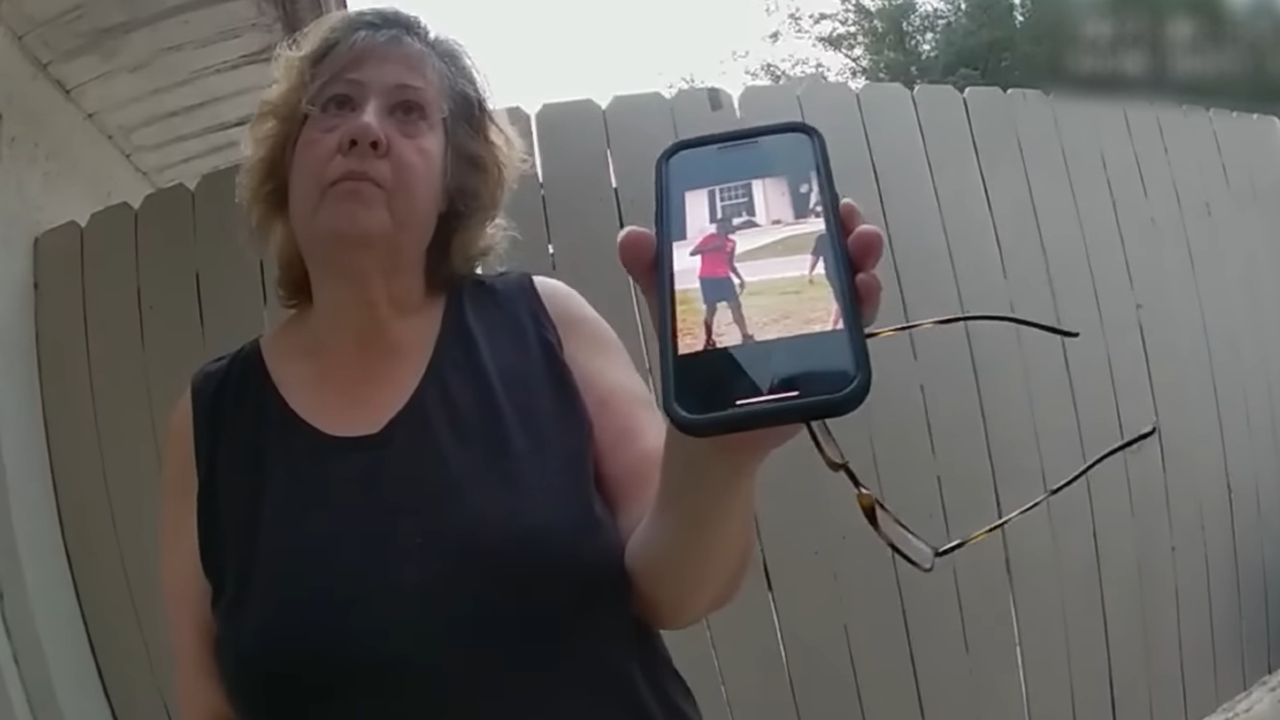Interview: The Ward Director John Carpenter
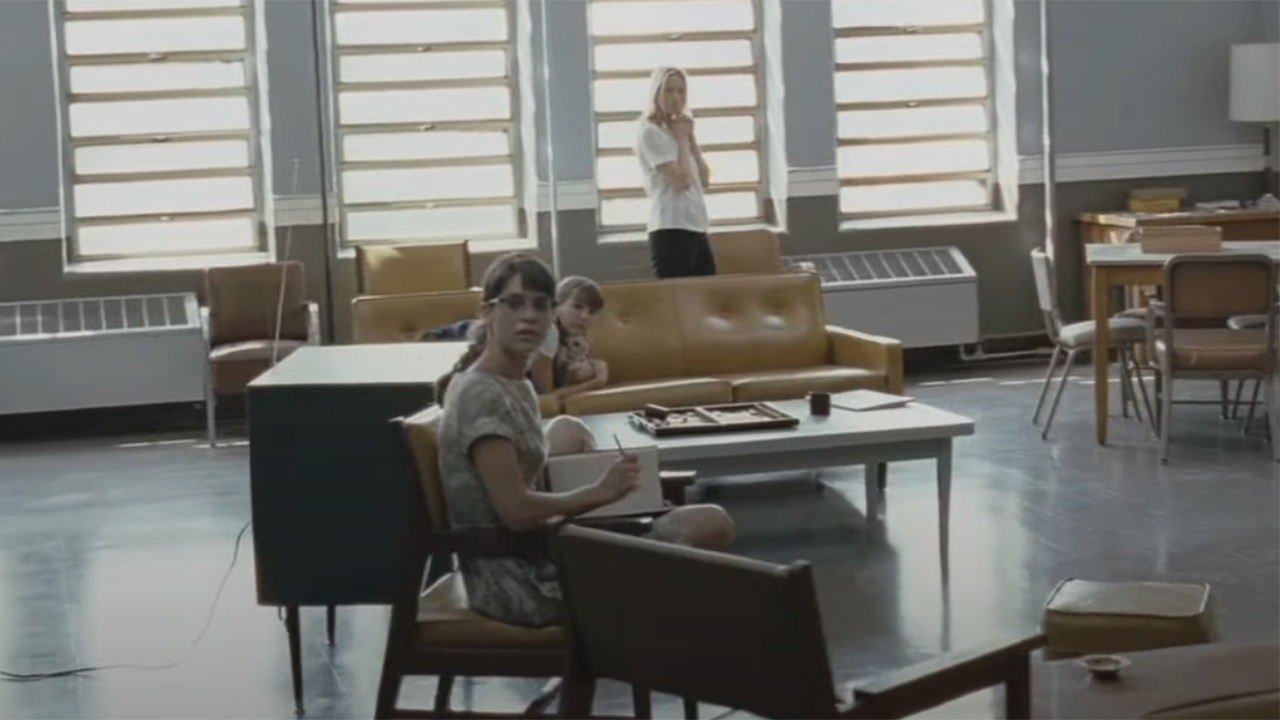
It’s been about ten years, but director John Carpenter is finally back behind the lens of a feature film and we’ve got Showtime’s Masters of Horror to thank. With dozens of titles to his name, Carpenter felt the need to take a step back from directing. However, when Masters of Horror summoned him to helm yet again, the experience reinvigorated the passion that, well, has terrified us all for years.
Carpenter makes his return with The Ward, a story from Michael and Shawn Rasmussen about Kristen (Amber Heard), about a young woman thrown into a psychiatric hospital. There, she not only meets the other patients, Emily, Sarah, Zoey and Iris (Mamie Gummer, Danielle Panabaker, Laura-Leigh and Lyndsy Fonseca), but the ward’s resident evil entity, too.
After so many years, you’d think Carpenter would have this down to a science. While he does to a point, he also emphasizes the fluidity necessary when making a film. When it comes to working with a cinematographer, his actors and even burning houses down, an abundance of planning is great, but ultimately, it depends on the situation and it’s vital to be able to adapt. In honor of The Ward’s July 8th release, Carpenter told me all about his process starting with finding the right script to taking the footage to the edit bay. Check it all out in the interview below.
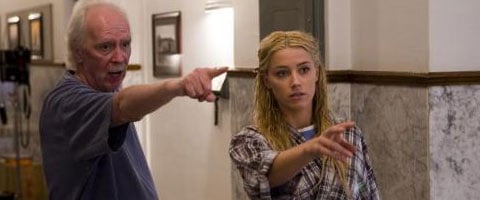
It’s been about ten years since you last directed a feature, so why now and why The Ward?
Well, it just came along at the right time. It was the right size film to do and I was interested in telling this kind of old fashioned ghost story. There was a psychological aspect to it, there was a young cast, ensemble of girls, which I really enjoyed working with. I had a great cast, I had a great time.
How’d you meet the Rasmussen brothers?
Echo Lake Productions had the script and they let me read it and at first I didn’t want to do it, but then I reconsidered and we did some work on the script with the Rasmussens and low and behold we started shooting it. It wasn’t something I generated myself. It was a project that I read.
Your Daily Blend of Entertainment News
What was it that made you change your mind?
Well, actually I decided to come back to directing because of these cable TV series episodes that I did, Masters of Horror. That was in 2005, 2006, somewhere in there. And I just had a great time directing again. I stopped because I burned out. I was just tired of making movies and this brought me back and I thought, ‘Boy, I could have fun again!’
Can you tell me more about working with the Rasmussens? Were there any specific parts of the script you wanted to change or enhance?
We just go through the script, basically go through the story and tighten things up and, you know, every director’s idiosyncratic; he’s going to find things that he doesn’t like or likes, doesn’t know how to do, go through those, strengthen some characters. I really wanted to make sure the characters were all strengthened, take out repetition, basically things like that.
I saw the video of your tech scout, but can you tell me a little more about that? Who do you take with you and what are you looking for?
Tech scouts take place usually after a director has chosen the location. Several beats to that; first you drive around and find the location that you like, sometimes with a cameraman, sometimes by yourself, sometimes with the location manager and then the crew, before shooting, we have a big tech scout where everybody stands around the set and we talk about how we’re going to shoot it and all the different aspects of the location – lighting, where we’re going to need certain equipment. In the case of The Ward, we were shooting in an old abandoned mental institution, part on a campus of a working mental institution. So we were off to ourselves in this old building and it had various sound issues. It had a three or four second echo in it just because of the way it was built, so it was a built-in echo chamber for all the dialogue. We talked about night scenes and what was going to be required. It’s a lot of just technical walk through.
What was the biggest issue you ran into during that process?
The biggest issue we faced was getting this farmhouse to burn because we had a scene in the beginning of the movie where a farmhouse burns down. We looked at a couple different locations that were great, but we never could get permission to burn it down and we finally found one. I was told throughout most of the shooting that we had permission to burn it and then at the last minute, of course we didn’t. So it was a lot of scrambling around. Anyway, finally, we burned it to the ground and then finally everybody was happy.
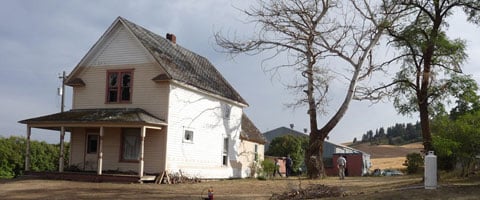
This might be more of a producing question, but who’s involved in getting approval to burn a house down?
The owner, the town, you have to have a fire department out there. It’s an old place so you have to make sure it’s not a culturally important place, the owner has to agree to it, all these different things, which, you’re right, is not my job, it’s the producer’s job. I’m the guy at that end of the hallway they always walk up to and say, ‘There was a little problem with the location.’ I’m the guy that says, ‘Well, what are we going to do now?’ But we got it done.
Then how about just shooting something like that and the time restrictions involved?
We tried to plan it so that we got all the necessary stuff shot, what time of day we had to start the fire. There was this huge crowd behind the location, the fire department, but then people from all around the county were lined up on the road watching it. It was kind of crazy. Once that gets going, you can’t stop it, you know? It’s just going. We had cameras on cranes, up close, we had to pull them out. I had a camera crew too close to the place and they had to run because they got too hot. It’s a lot of excitement for about three hours and then once you have it all in the can you feel better.
Can you tell me about working with your DP? What do you look for when deciding who’ll fill that role?
A number of different things, his eye, his ability at lighting and personality. I looked at his reel and then he and I met. Yaron Orbach is his name, he’s now a US citizen but he was Israeli at the time and he just had a really interesting approach to lighting. And I’ve never worked this hard with a director of photography as I did on The Ward. We worked for an hour everyday just exploring our instincts and tastes, how you see certain scenes, what are the clichés in scenes to avoid and how to photograph things.
What was your first conversation with him like? Did you basically tell him exactly what you want, maybe in terms of tone and color palette?
No, we just started by seeing if we could get along, if we talked the same language. And his experience, what kind of work has he done, what kind of negative does he shoot, is it saturated, what kind of colors does he like. I’m interviewing him rather than me dictating and seeing what he comes up with. How do you feel about available light? And then a lot of it is dictated by the location. You’re standing on this location, this big set of windows on one wall with light pouring in, well, you know what your key light’s going to be, to kind of get excited by that. Basically, it’s a relationship. It’s a creative relationship that you have to establish, have a lot of trust between the two.
How about casting? Did you have specific people in mind?
I just opened myself up to the casting director and got a lot of submissions of a lot of movies that actresses had done. I watched them and I was struck by certain actresses who are just amazingly talented. So I would meet with each one of them and, once again, it’s an interview process where you see if you can get along, what’s your take on the material, how do you feel about the character, that kind of thing.
Do you remember any specific films that were sent in that you liked?
I remember Amber [Heard] sent in Everybody Loves Mandy Lane. I was impressed with that. And then meeting her, she’s just a really smart, talented girl.
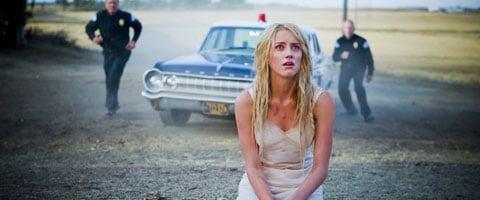
Was she the first to be cast? Did you cast around her?
She was the first one I met and I cast her. Then I met Mamie Gummer and Danielle Panabaker. Laura-Leigh I cast, I saw a tape of her and met her and she was just sensational.
Can you tell me about some of your methods when it comes to directing actors? Do you like to rehearsal a lot? Are you very hands on?
We rehearsed a little bit on The Ward. I love to rehearse. If we get two weeks of rehearsal, it’s great. And a lot of that’s just reading the script and talking about it. A director’s job is to lay the foundation for an actor to do his best work, so then when the camera rolls, they’re ready to go. And different actors need different things. Some actors don’t need a director, or they don’t think they do. Some actors need a director to tell them everything. Some actors love to fight with the director. Some actors need a good father. It all depends on the person.
What about in terms of personal material? Do you like to have anything in your back pocket like a lined script or script notes?
No, I try to prepare every night, which means generally figuring out what work we have to do the next day and how many shots we need and figuring out the dynamics of a scene. Sometimes I’ll have a shot list with me and sometimes I won’t. It all depends. But I’ll go over to the script supervisor and look over his shoulder and say, ‘What do they say to each other here?’
How would you compare shooting something with more action like a death scene compared to a more intimate conversation?
Well, every scene is different. On a horror film, when it comes time to kill a cast member, that’s usually when everybody has the most fun. There’s more laughter and lighthearted pranks during a death scene, depending on how it goes. Sometimes it’s harder to get through an intimate scene, a dialogue scene, just because of repetition. It all depends on the actress, it all depends.
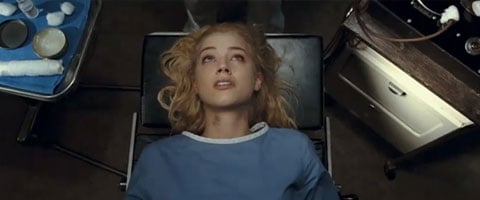
How involved are you in the editing process?
You get up every morning and you go into the editing room and just, go at it. The editor puts together an assembly of the movie, his first cut, and you start working on that and just making changes and improving it, speeding it up, putting emphasis in different places.
Now what happens if you get to a place and don’t have the proper coverage to fix it? Do you have ways of working around those issues?
Sometimes, [laughs] sometimes not. Every movie I make, two things happen; I learn something and I say to myself, ‘Why did you shoot it that way? What is wrong with you?’ I get pretty hard on myself. Hopefully we’ve got everything that we need and when we don’t, we just fake it!
I know you’re focused on the release of this, but do you have plans for what’s next?
I’m working on several projects now, but I’m taking it slower and easier; I’m an old guy now. I’m not like you young kids that go all the time. I’ve got to relax!
Staff Writer for CinemaBlend.

